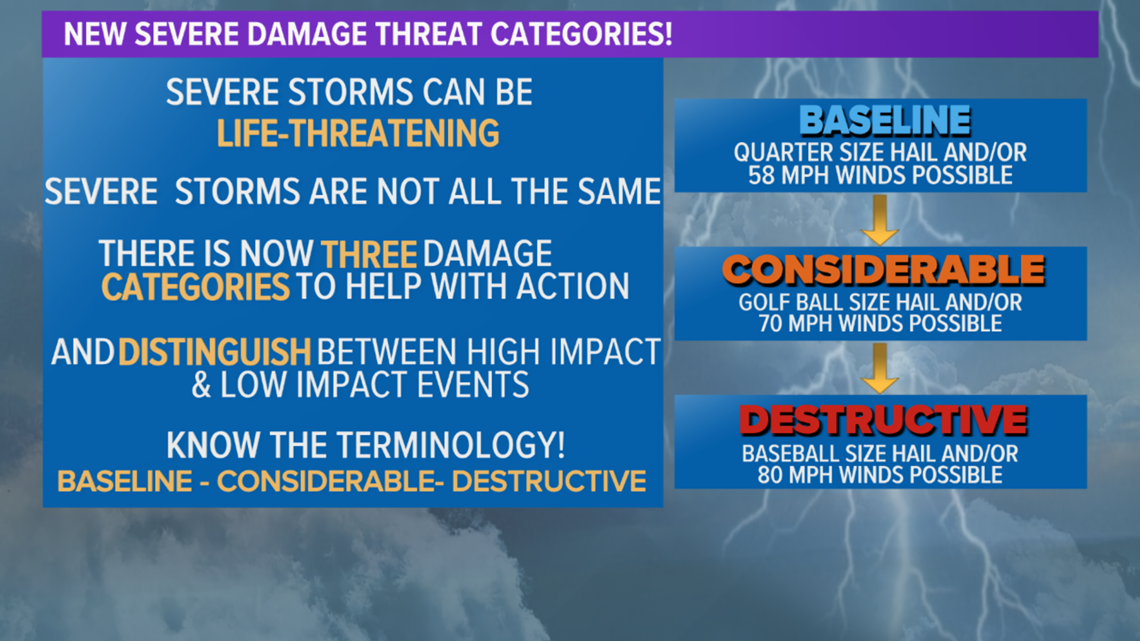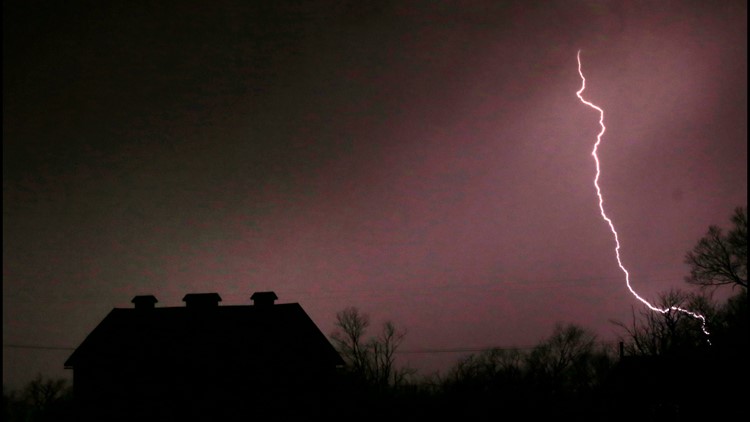WASHINGTON — The National Weather Service is rolling out a new way to describe a severe thunderstorm.
Starting August 2, any time a Severe Thunderstorm Warning is issued there will also be a breakdown of the damage threat. This will help to distinguish between a high-impact and a low-impact event.
The categories are baseline, considerable, and destructive.
If a "destructive" Severe Thunderstorm Warning is issued, this will automatically activate a Wireless Emergency Alert (WEA) on smartphones in the warned area.
On average, only 10% of all severe thunderstorms reach the destructive category level each year, according to the National Weather Service, but those storms can cause massive damage.
The agency noted that severe thunderstorms accounted for 13 of the 22 costliest weather disasters in 2020. The new "destructive" alert would have activated for many of those, including the derecho that hit Iowa in August 2020. That's on record as the costliest thunderstorm in U.S. history, the National Weather Service stated.
When you would most likely see this damage threat level would be during a damaging wind event like derechos or more intense thunderstorms like "Supercell" storms that can produce some very large hail.


The reason for this change is to have a better way to convey to the public when there is an urgent need for action. Make sure to know how to stay safe in a severe thunderstorm. Where do you go before, during and after a severe storm in your area.


- Baseline: This is unchanged from a normal severe thunderstorm warning. Quarter-size hail(1.00" in diameter) and/or 58 mph thunderstorm winds. This will not activate a WEA. When no damage threat tag is present, damage is expected to be at the base level.
- Considerable: This criteria is at least golf ball-sized hail (1.75" in diameter) and/or 70 mph thunderstorm winds. This will also not activate a WEA.
- Destructive: The criteria for this damage threat is baseball-sized hail (2.75" in diameter) and/or 80 mph thunderstorm winds. This is the only category that will activate the WEA on smartphones in the warned area.



